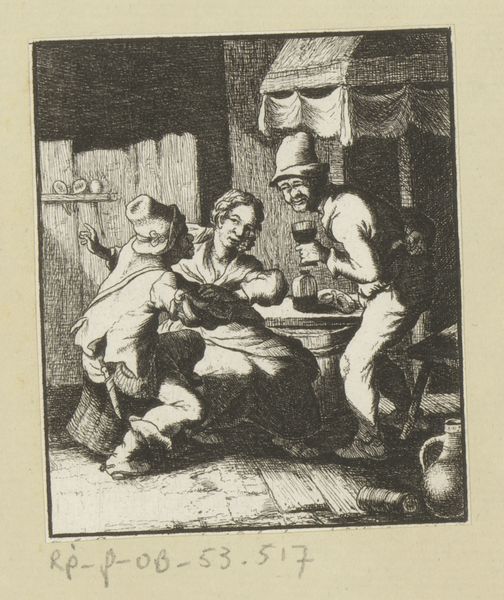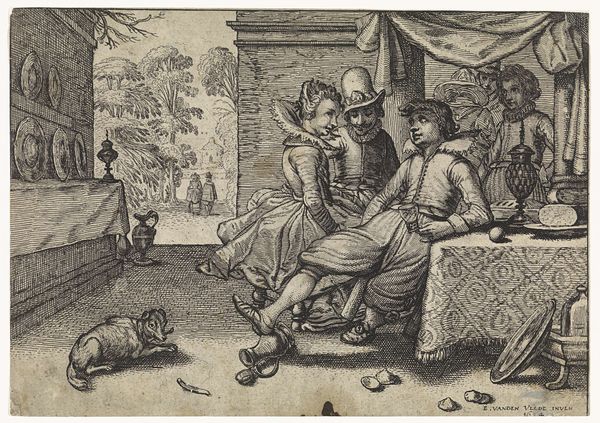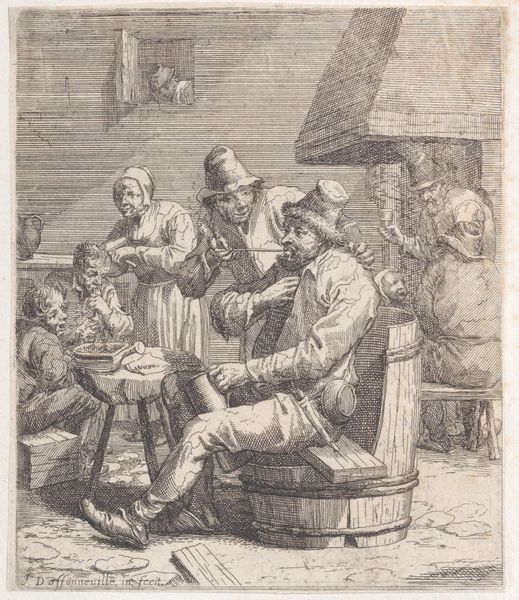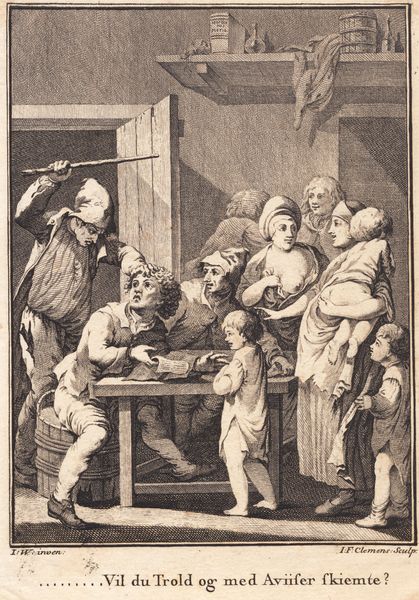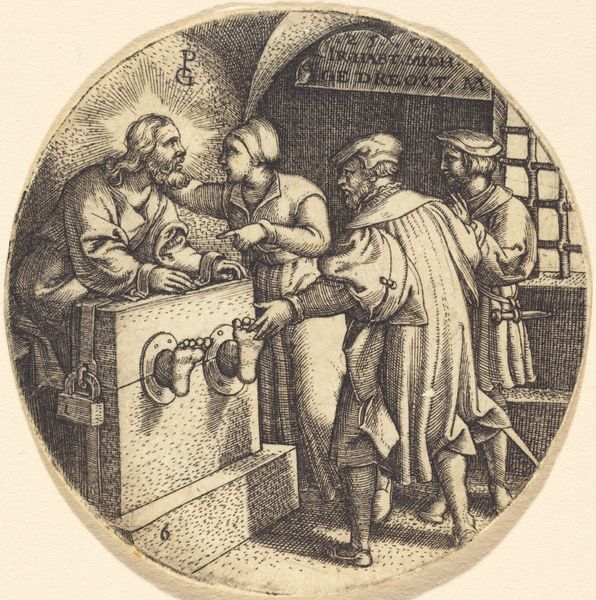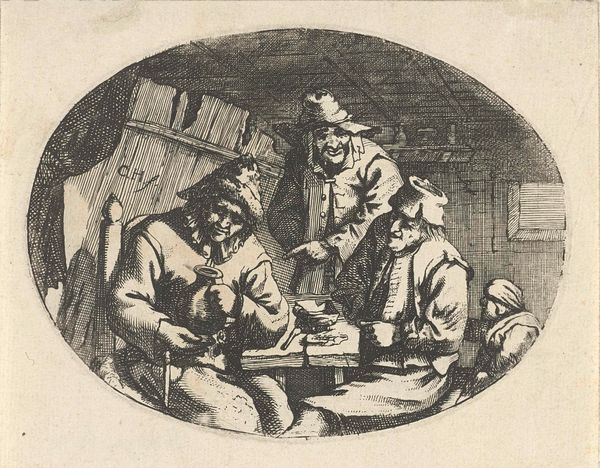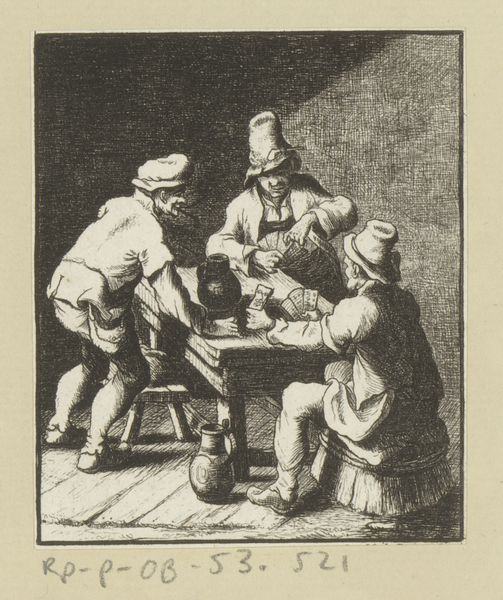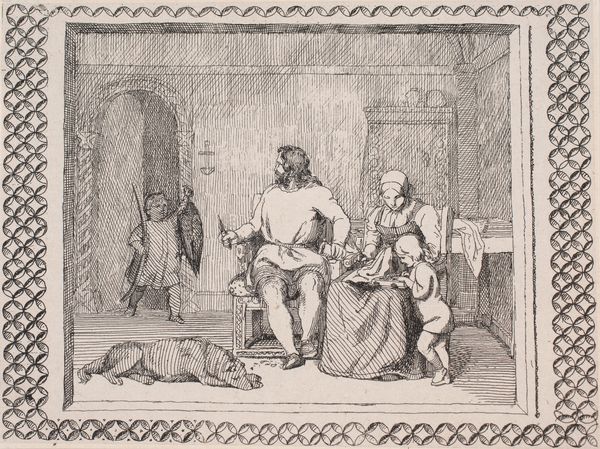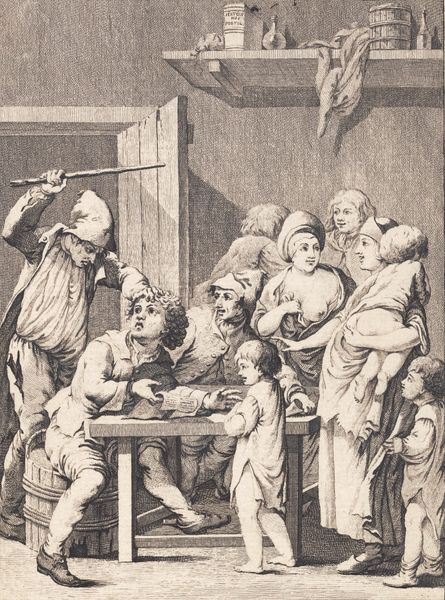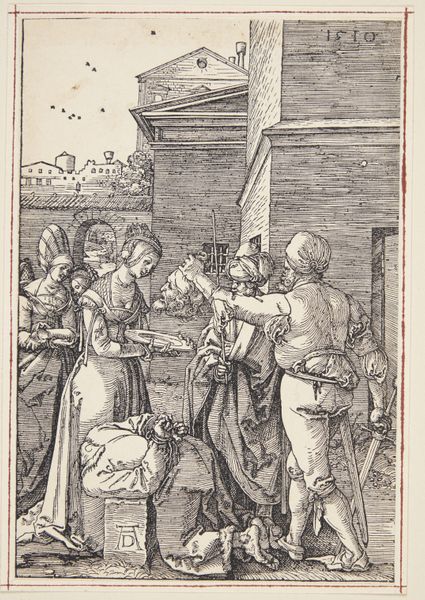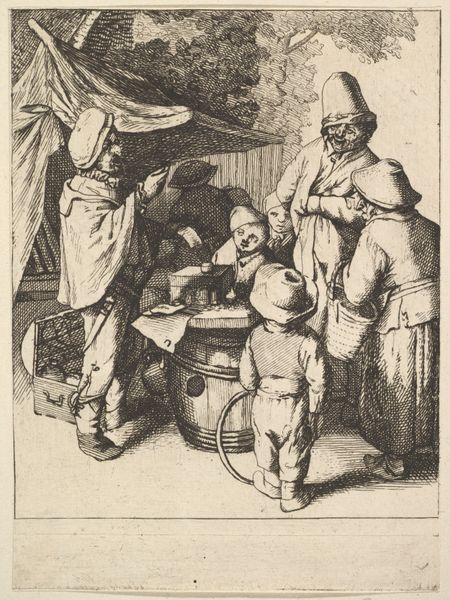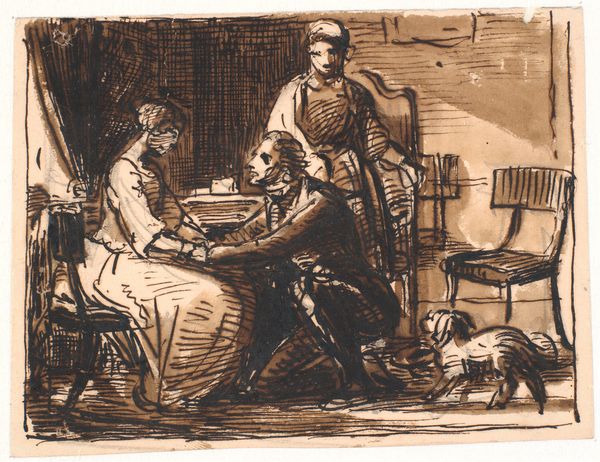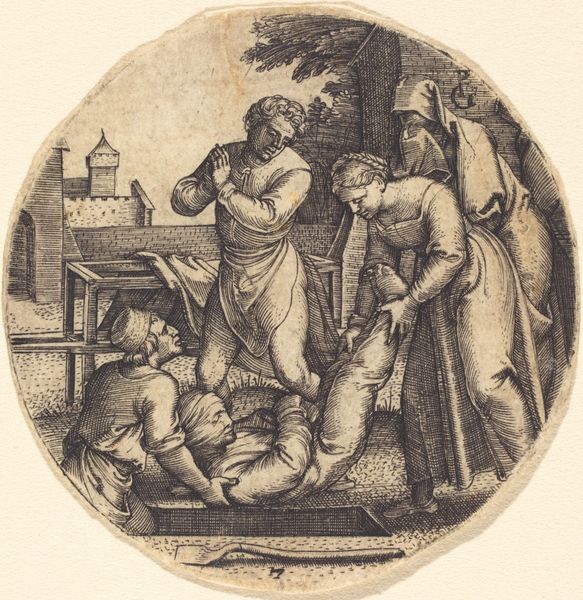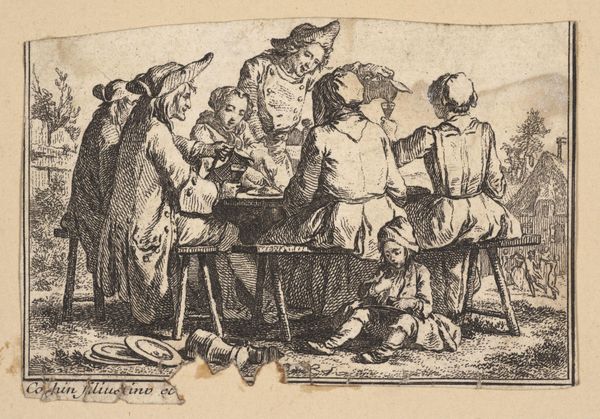
print, engraving
# print
#
old engraving style
#
figuration
#
genre-painting
#
history-painting
#
northern-renaissance
#
engraving
Copyright: National Gallery of Art: CC0 1.0
Curator: Georg Pencz, an artist associated with the German Renaissance, is likely the author of this print, an engraving titled "To Feed the Hungry." Its compact, circular composition contains a wealth of social and historical information. Editor: My immediate feeling is that of a hushed, tense atmosphere. It feels as if a decisive, potentially fraught moment is unfolding. I wonder what triggered this scene. Curator: Precisely! This is a figuration of a specific, if contested, passage from the Gospel of Matthew, often dubbed one of the "Acts of Mercy." Consider the central figure's halo, immediately positioning him as a divine presence surrounded by everyday people. We’re looking at an articulation of religious doctrine influencing civic life, no doubt charged with social implications regarding care. Editor: The light source is odd, though. Is it external, like divine illumination, or perhaps just skillful manipulation of highlights within the engraving itself? And why is that little dog so desperate, almost mirroring the plea of the man being fed? It seems to know a treat when it sees one. Curator: That, I suspect, draws attention to the intersection of charity and class. The contrast between the presumed comfort of the seated figure and the obvious need of the others emphasizes power dynamics inherent in these acts of supposed "mercy." The server at the right, caught mid-pour, has an uneasy tension in his brow as if aware of how conditional their generosity appears. Editor: You're probably right about the artist revealing a darker layer. There’s something almost staged about their interaction. But it’s still really touching, you know? Someone getting a bit of succor, even a gesture of that kind of relief is nothing to dismiss, however conflicted! It feels almost theatrical, and yet painfully raw and intimate too. It's complicated, like life often is! Curator: It's through examining those very complexities—religious decree intersecting with practical social inequities that Pencz achieves an image ripe for discussion. Each carefully rendered line builds towards an ongoing question around responsibility. Editor: Ultimately it's about our mutual recognition of one another's essential human needs. Seeing it visually somehow solidifies the concept, I feel like I better remember it from here on out.
Comments
No comments
Be the first to comment and join the conversation on the ultimate creative platform.
